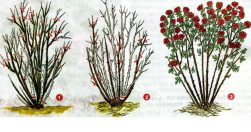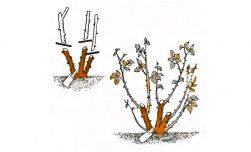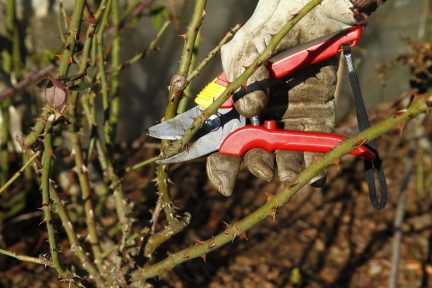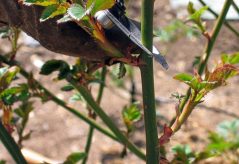Under the rays of the spring sun, all life begins to awaken after a winter sleep. All processes are very quickly activated, so gardeners begin to prepare for gardening events immediately after the snow cover has melted. This is understandable, because before you cut roses in spring, you should study all the nuances of the procedure, including calculating its optimal timing and much more.
Material Content:
Do I need to prune roses after wintering
The need for spring pruning is due to a number of factors:
- Preservation of decorativeness - in the spring the bush is given the desired shape.
- Increased immunity - timely removal of weak and damaged shoots in winter cold saves plant vitality.
- Ensuring long and plentiful flowering - pruning stimulates the development of young and strong shoots, which contribute to the violent flowering phase, which lasts much longer in this case.
Despite the fact that pruning is also carried out in summer, when faded inflorescences are removed, as well as in autumn, when overgrown branches are shortened, spring works are the determining factor.
Dates of the procedure
To achieve the above goals, it is necessary to correctly calculate the timing of the trimming, which, as a rule, occurs in late April - early May. However, in each case, the timing may vary slightly due to the climatic conditions of the cultivation region. If the shoots are shortened too soon, they may suffer from freezing frosts at night, and flowers will appear much later.In case of being late, the bush will spend all its energy on restoring old and weakened shoots, and flowering will be very poor.
How to prune roses in spring
To extend the life cycle of the Queen of Flowers and ensure her beauty for the whole season, it is necessary to follow the following rules when pruning:
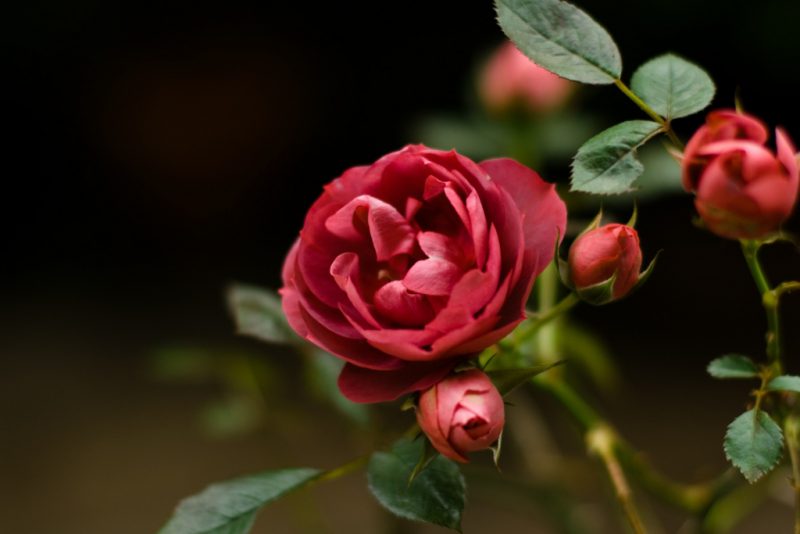
- Powerful bushes with the help of a sterile and well-sharpened secateurs save from old, sick and growing inward branches while maintaining only powerful shoots, which produces a rejuvenating effect.
- On weak and poorly developed bushes, the sprouts only slightly shorten (by a maximum of 2 buds), which stimulates their further development.
- Branches damaged by frost are cut to the area with healthy wood.
- The tool for the procedure must be disinfected so that microorganisms are not transferred to plants.
- The slice is made oblique 1 cm above the kidney, because it is from the leaf sinuses that new shoots develop.
- Wild growth that appears below the vaccination site is twisted without a trace.
Types of pruning flowers according to grade
For each group of varieties, the correct pruning of roses has its own characteristics associated with the structure of the bush, the timing of flowering and a number of nuances.
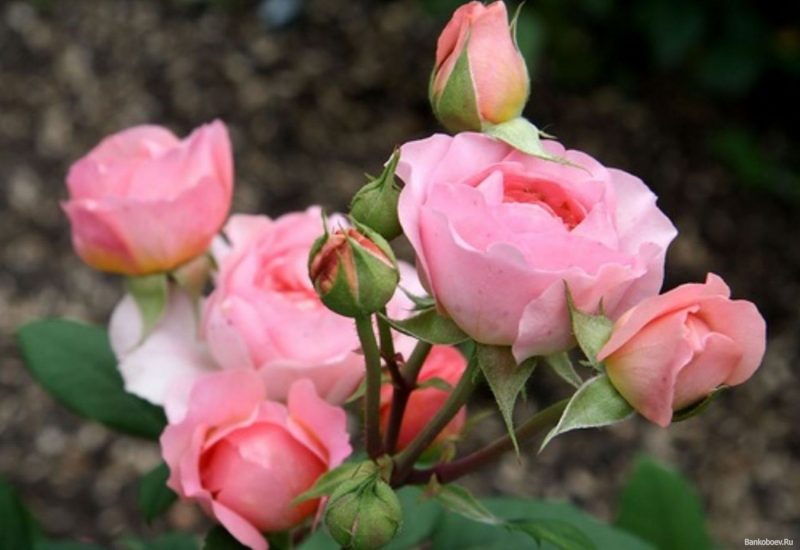
Stamp roses
To preserve the beauty of the pink tree, you should pay attention to the scion:
- if a hybrid tea rose was used for it, then all weak shoots are removed, and only 4-5 strong skeletal branches remain;
- when a wicker beauty acts as a scion, then the shoots are shortened only half the length.
Climbing roses
The pruning technique of this group of varieties depends on the rate of flowering. In the repairing representatives, the side shoots are shortened to 4 buds, and the central lashes are not worried. Once blooming forms of spring pruning are not exposed, since the formation of buds occurs only on last year's shoots.
Ground cover roses
Varieties of this group are pruned every two years. When carrying out work, scissors are used to form hedges. The height of the plants after trimming is not more than 25 cm.
Hybrid Tea Roses
Annual spring pruning is the key to the lush flowering of tea roses, in which buds are formed on young shoots. In tall varieties, 6 skeletal branches should remain after the procedure, while for lower species it is enough to leave 3 branches with 3 buds on each.
Park roses
The technique of pruning park varieties is similar to the procedure for climbing roses: it all depends on the frequency of flowering. The main difference consists only in the fact that not only lateral, but also central shoots (by a third of the length) are shortened in repairing forms.
Caring for roses after spring pruning
Measures to care for the trimmed bushes differ little from those dictated by the cultivation agricultural technique of any variety:
- processing - after trimming, as a rule, preventive protective measures are taken against the development of diseases (using copper sulfate);
- top dressing - the mandatory introduction of nitrogen-containing fertilizers, which are an important component of the formation of a lush bush: nitrogen stimulates the active recovery and growth of green mass;
- frost protection - if spring pruning of roses was carried out ahead of schedule, and weather forecasters promise night frosts, then it is worth protecting the bushes with a film;
- watering - since the soil still has a natural supply of moisture, watering roses should be moderate, without over-moistening the trunk circles;
- mulching - to close moisture and preserve soil friability, the full development of the rose bush is ensured. This is due to the access of oxygen to the roots. In this case, trunks should be covered with mulch.
Tips from experienced gardeners
Experienced gardeners who successfully cultivate roses for a single year advise:
- Before pruning, remove all last year's plant debris from under the bush and inspect the plants for general conditions.
- It is desirable to carry out the procedure in sunny weather with a sterile and sharp secateurs.
- To make a cut over a bud directed outward to avoid thick growth inside the bush.
- To treat the places of cuts with garden varnish, preventing infection of plants with infections.
Beautifully blooming rose is a magnificent decoration of any garden. However, in order to achieve magnificent flowering, you will have to make certain efforts, which as a result will pay off with interest.


